Pakistani pilots pull off daring rescue
Alexander Gukov winched off Latok I
Russian climber Alexander Gukov (42), who was stranded at 6200m on the North Ridge of the Latok I (7145m) in the Karakoram, was rescued after six days on 31st July. The miraculous rescue operation was performed by brave pilots of two B3 helicopters operated by the Pakistani 5th Army Aviation High Altitude Squadron.
Together with another Russian climber, his partner Sergey Glazunov (26), Alexander Gukov arrived in the Karakoram to climb via the North Ridge route (Lowe-Donini-Kennedy route) of Latok I. The duo set off to climb on 12th July and made the summit attempt on 22nd July. But due to the deteriorating weather conditions, they had to retreat from 6975m. There was no visual contact or any further information from them until 25th July in the afternoon, when Gukov sent an SOS signal asking for evacuation. He texted the news of his partner, Sergey Glazunov, who fell to his death while rappelling.
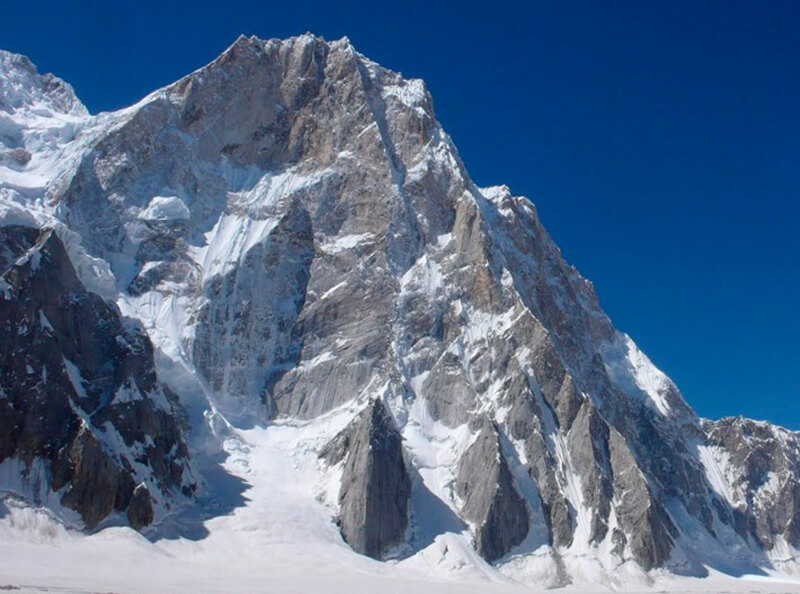
North Ridge of Latok I
Immediately after, a rescue operation was carried on under the voluntary supervision of Anna Piunova (Editor-in-Chief at mountain.ru) to salvage Alexander Gukov, who was trapped on the mountain since 25th July. Italian Hervé Barmasse and German David Göttler, who were on their Gasherbrum IV expedition, had requested to participate in the rescue operation, but Pakistani military helicopter was unable to transfer them to the Base Camp of Latok I, due to bad weather. Dense cloud and continuous bad weather interrupted the rescue operation till 30th July. Finally, on 31st July in the morning, two Pakistani choppers discovered Gukov and rescued him from Latok I, with the help of the long-line rescue.
The North Ridge of Latok I is considered to be an extremely difficult route to climb the mountain. In 1978, American climbers Jim Donini, Michael Kennedy, George Lowe, and Jeff Lowe attempted the route first. They spent 26 days on the mountain and were forced to retreat approximately 150m below from the summit due to extremely difficult climbing conditions and the sickness of Jeff Lowe. More than 30 teams and famous climbers from different countries have attempted the route since then, but no one succeeded on the notorious unfinished route. In 2017, Alexander Gukov together with Anton Kashevnik, Valery Shamalo, attempted the same route and returned back from around 6700m, which was considered to be the highest point reached since the legendary first attempt in 1978, mainly because of the sickness of Valery Shamalo.
Gukov was awarded with the Piolet d'Or in 2015 for completing the first ascent of the SouthWest Face of Thamserku (6618m) via a new route (they named the route Shy Girl) in Nepal with Aleksei Lonchinskii in 2014.
Expedition Teams:
Russian Team [Team 1]: Victor (Viktor) Koval, Konstantin (Kostya) Markevich and Alexander Parfenov
Russian Team [Team 2]: Alexander Gukov and Sergey Glazunov
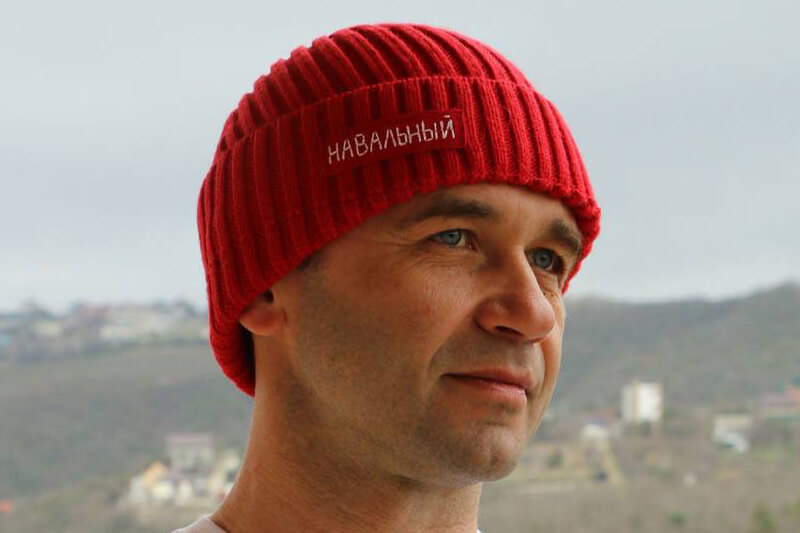
Alexander Gukov
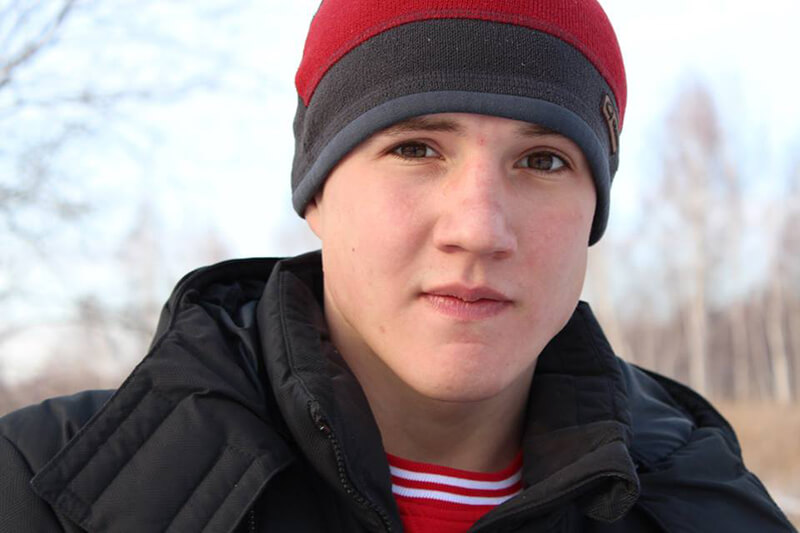
Sergey Glazunov
Timeline
(Based on the report by mountain.ru and Anna Piunova, Editor-in-Chief at mountain.ru)
Expedition:5th July: Alexander Gukov and Sergey Glazunov reached the Base Camp.
The other Russian team (Victor Koval, Konstantin Markevich and Alexander Parfenov) [Team 1], who reached the Base Camp on 1st July, returned back to Base Camp due to bad weather, after their first acclimatization climb, up to 5240m.
7th July: Gukov and Glazunov reached up to 5200m for their first acclimatization climb.
While Team 1 reached up to 5900m.
9th July: Gukov and Glazunov spent night at 5875m.
Team 1 went down to Base Camp.
10th July: Gukov and Glazunov went down to Base Camp.
11th July: The two team decided to climb separately from the next day. Team 1 would climb via North Face (the center of the wall) and Team 2 via North Ridge (the unfinished Lowe-Donini-Kennedy route).
13th July: Gukov and Glazunov reached up to 5328m.
15th July: Gukov and Glazunov spent night at 5512m.
16th July: Gukov and Glazunov reached up to 6154m.
Team 1 reached up to 5600m.
19th July: Gukov and Glazunov spent night at around 6767m.
20th July: Gukov and Glazunov reached around 6500m.
Team 1 went down towards Base Camp from 6081m.
22nd July: Gukov and Glazunov made an attempt to summit, but failed. However, they reached up to 6975m. The weather deteriorated in the evening.
Team 1 reached Base Camp yesterday (21st July).
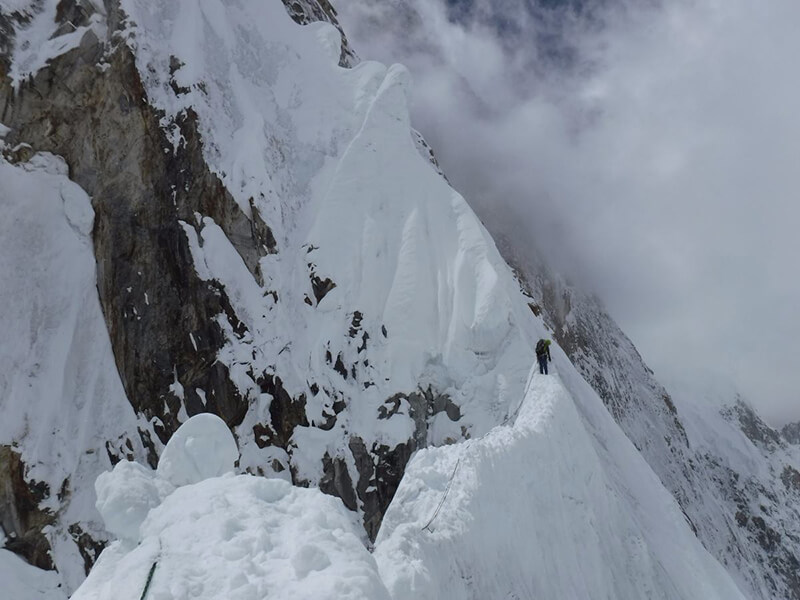
Climbing via the North Ridge of Latok I
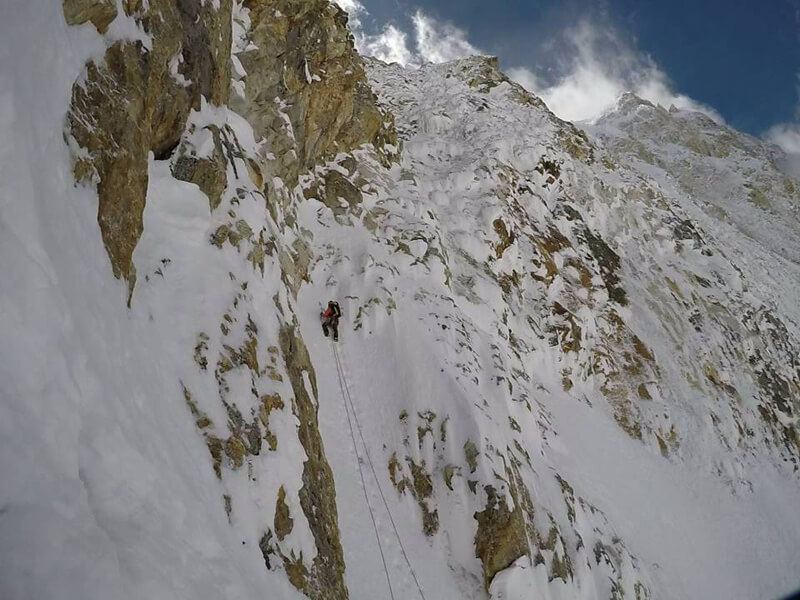
Climbing via the North Ridge of Latok I
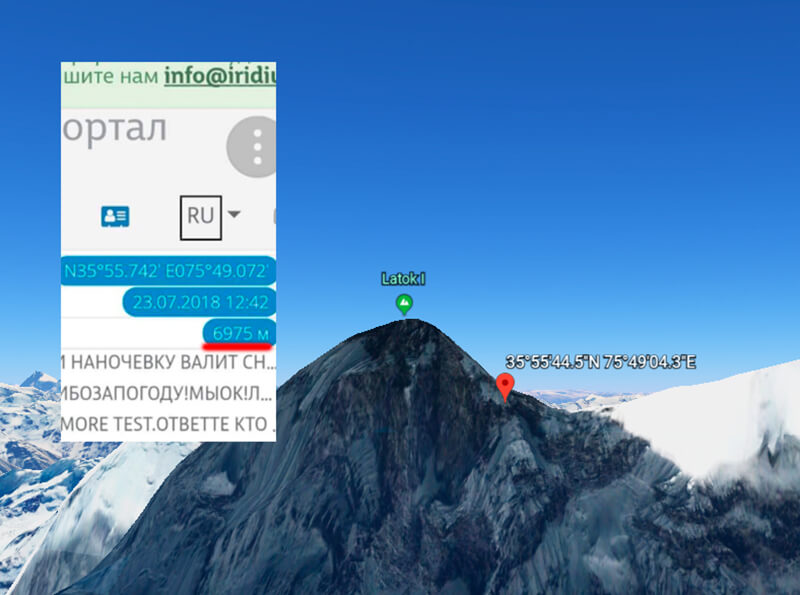
The highest point (6975m) showed by Alexander Gukov's GPS
24th July 5:10pm: No visual of Gukov and Glazunov was spotted on the North Ridge through binocular from Base Camp, as reported by Victor Koval, who, earlier announced the end of their (Team 1) expedition due to bad weather.
25th July 8:33am: A tent was spotted through binoculars at around 6700m, inside that there was only one person.
25th July 11:45am: Military chopper flew and threw away food and gas at 6700m.
25th July 2:24pm: SOS signal came from Alexander Gukov asking for help and evacuation. He was stranded on the wall at 6200m without equipment to descent. "I need help. I need to evacuate. I'm hanging on the wall without equipment," Gukov texted. Sergey Glazunov fell to his death while rappelling.
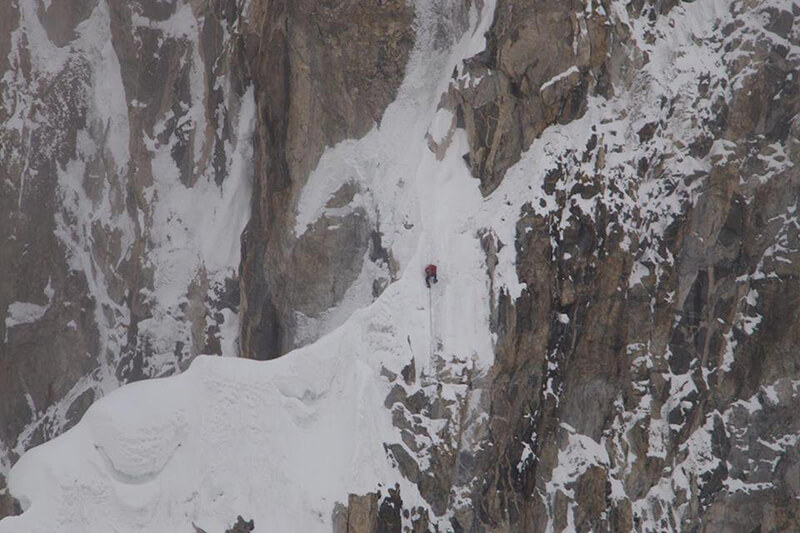
On the North Ridge of Latok I, on 25th July
26th July: There were clouds all over the mountain. Due to the risk of avalanche, it was impossible to go to the Ridge of the mountain. Climbers like Italian Hervé Barmasse and German David Göttler had requested to participate in the rescue operation. Barmasse and Göttler, who were on their Gasherbrum IV expedition, were ready to be choppered from the Base Camp of Gasherbrum IV to the Base Camp of Latok I. Unfortunately, due to the bad weather and low visibility all along the day the helicopter wasn't allowed to take off and transferred the rescuers to the Base Camp of Latok I.
27th July: Bad weather continued from the previous day. Hence no flight was possible. However, the pilots of Pakistan Army were trained to work with the rope. It would help them in case of long-line rescue situation. The weather was expected to improve on 29th July. Gukov texted in the morning that, there were so many avalanches on the mountain. He had a problem while boiling water. But later in the afternoon, Gukov texted that, he found half of a Snicker and also drank some water.
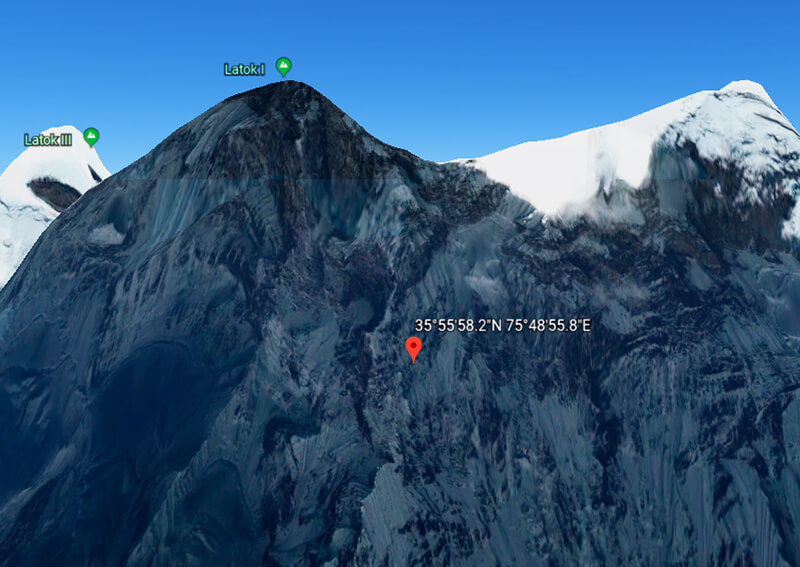
The point, from where Alexander Gukov texted on 27th July
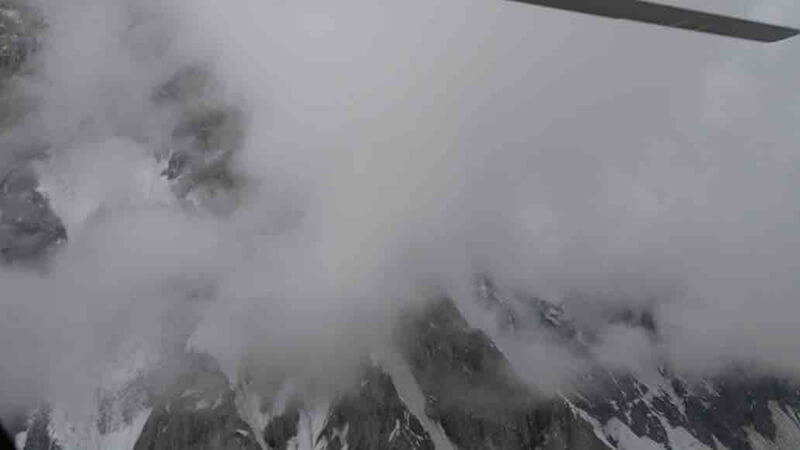
Weather at Latok I Base Camp on 27th July
28th July: Unfortunately, again, no flight was possible due to clouds on Latok I. The battery of Gukov's satellite phone became empty. Victor Koval reported from Base Camp of Latok I that, the weather had improved but the mountain was still shrouded in clouds. There was a good chance in the next morning.
29th July: The forecast on the previous day about improved weather conditions proved to be wrong, as fresh snow fell since the previous night. The 20cm of unstable snow increased the chance of avalanche. The rescue helicopter was able to take off in the afternoon. But unable to continue for so long and there was no visual contact with Gukov. Barmasse and Göttler, still remained at the Base Camp of Gasherbrum IV.
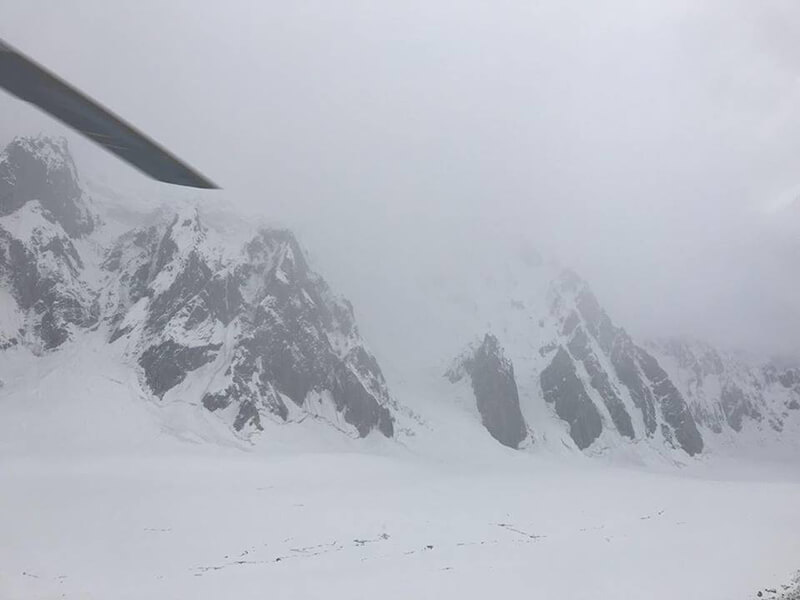
Weather at Latok I Base Camp on 29th July
30th July: The rescue helicopter took off but was unable to reach to the height where Gukov was stranded since 25th July. Again, the bad weather interrupted the rescue operation. Though Barmasse and Göttler, still remained at the Base Camp of Gasherbrum IV, Slovenian Aleš Cesen, Luka Stražar and British climber Tom Livingstone returned at Base Camp of Latok I, which increased the possibility of the ground rescue operation. However, the long-line rescue from helicopter still seemed the best option. Two Russian pilots with vast long-line rescue experience, set off for Pakistan to help Pakistani rescue team.
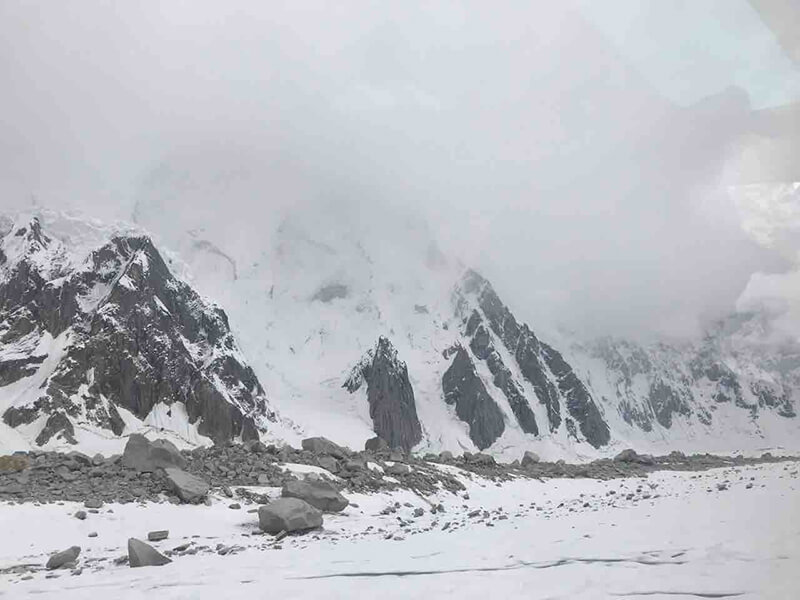
Weather at Latok I Base Camp on 30th July
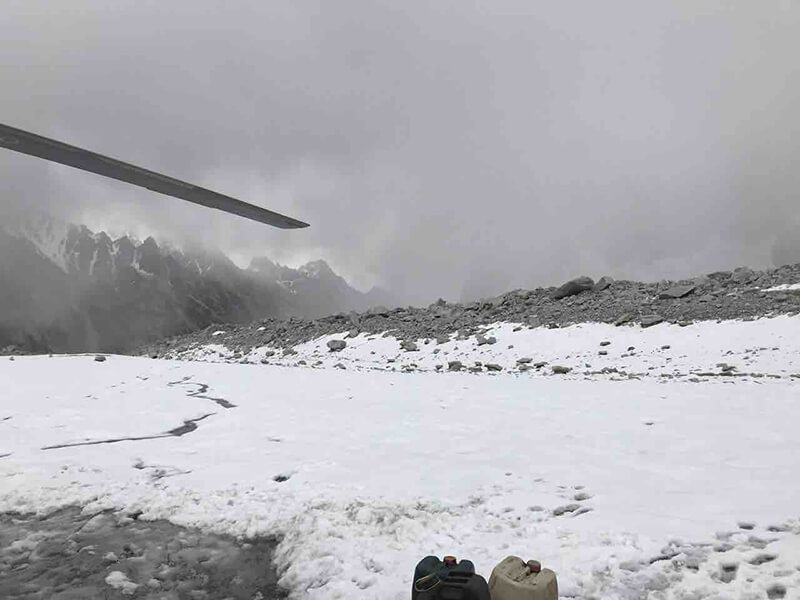
Weather at Latok I Base Camp on 30th July
31st July 4:35am: The weather was great which improved the visibility of Latok I.
31st July 4:45am: Two helicopters with four Pakistani pilots of Askari Aviation Pakistan, led by Brigadier General Basharat took off from Skardu.
31st July 5:30am: The choppers arrived at Latok I and began the search operation for Gukov.
31st July 6:00am: Alexander Gukov was discovered by the pilots. They managed to lower the cable (long-line) to Gukov. After 15min Gukov finally managed to hold the cable and anchored himself. But he forgot to remove his self-anchor (safety gear) to the mountain. Fortunately, that self-anchor broke down due to the tension of the flight and after six continuous days full of anxiety, frustration and fear, on the seventh day, Alexander Gukov was rescued. First, he was brought to the Base Camp of Latok I and then to the military hospital in Skardu. There he was examined by physicians and doctors and provided first aid. He had frostbite on his feet and a slight injury on his chest due to transport with the long-line. Moreover, his body was severely dehydrated. Later he was hospitalized at Combined Military Hospital (CMH) in Rawalpindi. His perished partner, Sergey Glazunov remained on the mountain.
* Time mentioned in the report is Pakistani time.
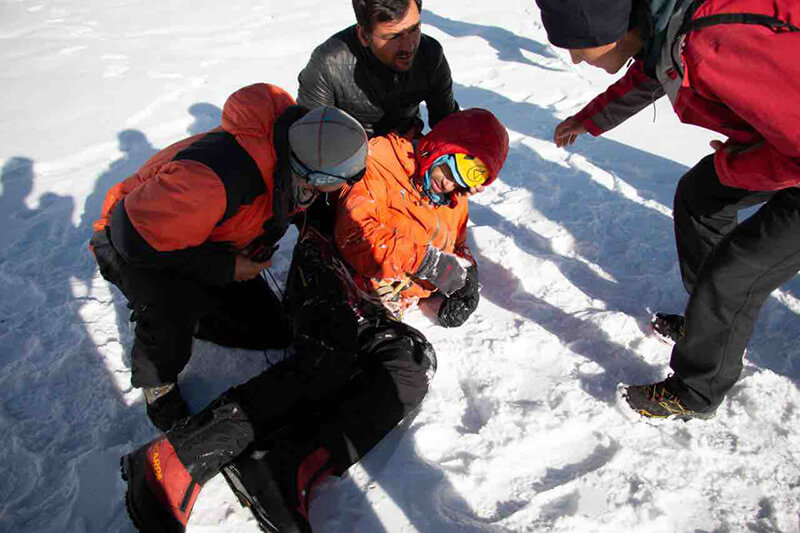
Alexander Gukov at the Base Camp of Latok I after rescue
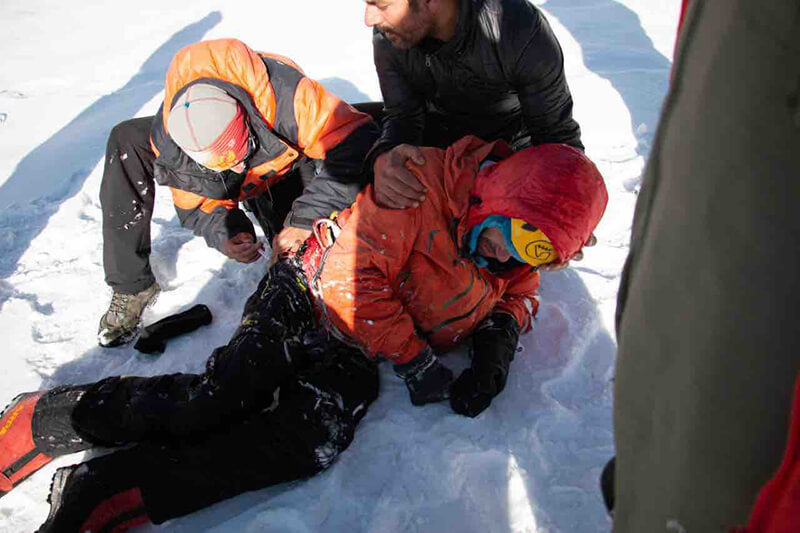
Alexander Gukov at the Base Camp of Latok I after rescue
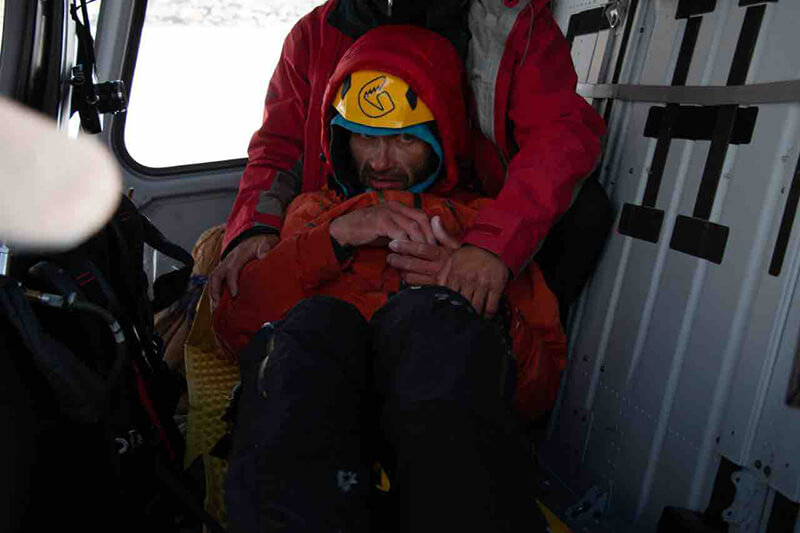
Alexander Gukov after rescue
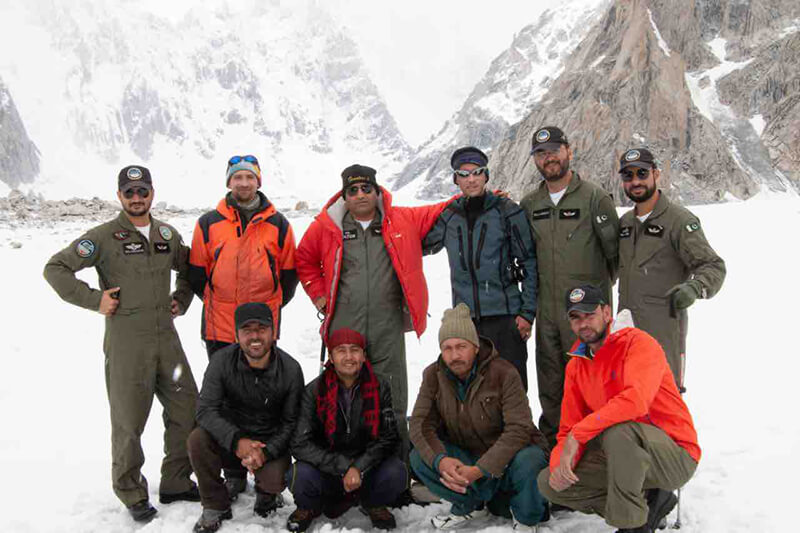
Pakistani rescue team: Pilot in the top row (in a red jacket)
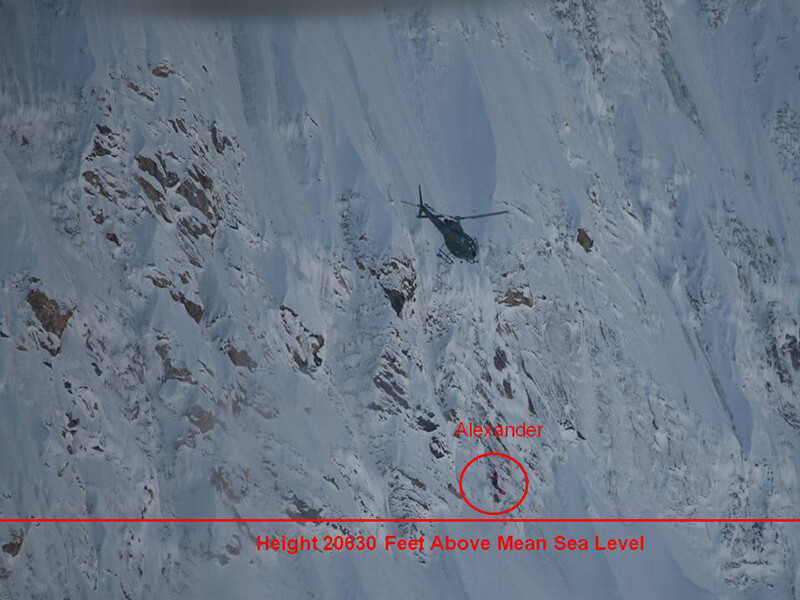
The long-line rescue operation of Alexander Gukov
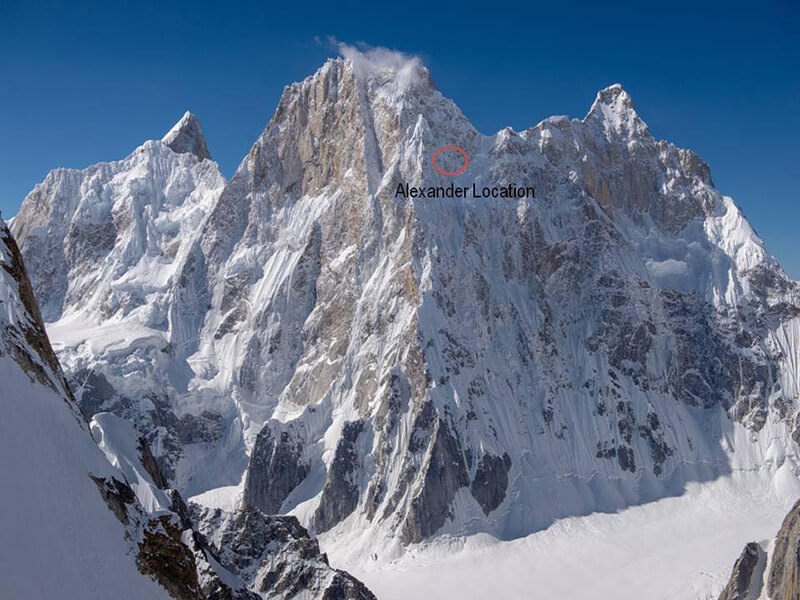
The position of Alexander Gukov's tent (~6200m)
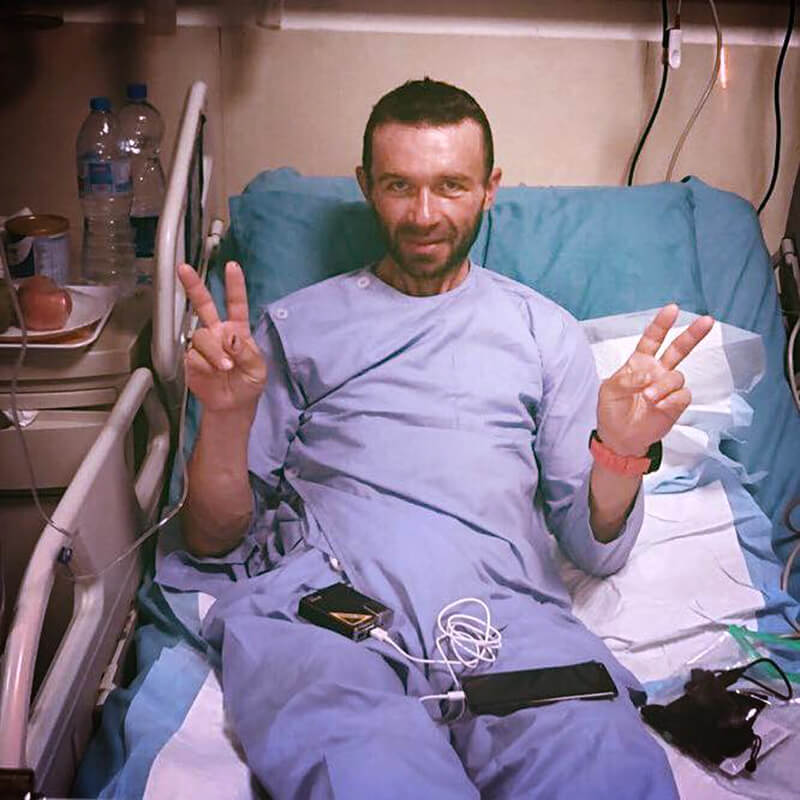
Alexander Gukov at Combined Military Hospital (CMH) in Rawalpindi
Photo Courtesy: mountain.ru, Anna Piunova, Pakistan Army and Alexander Gukov






